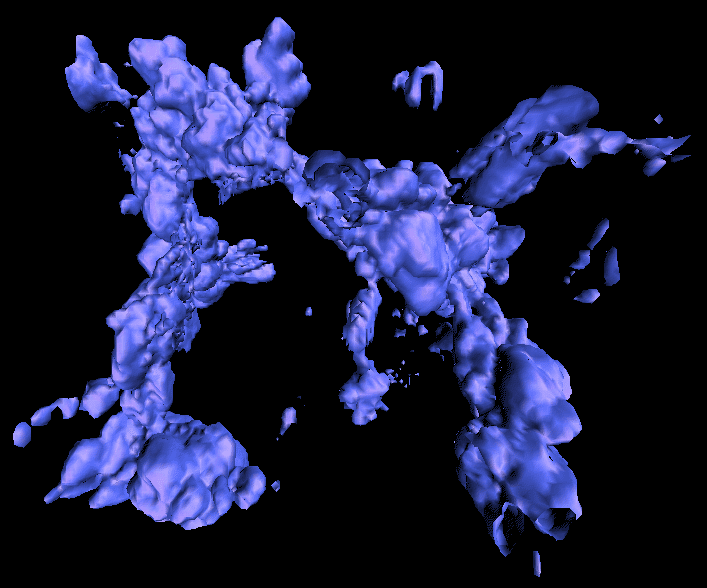The Fluid Universe: Formation of Structures After the Big Bang
November 1st, 1992 - November 1st, 1993
Categories: Applications, Supercomputing, Visualization

About
The physics of fluid flow coupled with gravity is of crucial importance to the understanding of many astrophysical phenomena. In this application, CAVE participants stand inside the universe and experience the evolution of the largest structures observed to date as they form around them; data was pre-computed on NCSA’s Convex C3880. Starting around the time of the Big Bang, about 15 billion years ago, participants follow the evolution of the nearly homogeneous gas as it fragments and collapses under its own self gravity. By following the evolution of density isosurfaces, we see that the amount of gas at high density (within the surfaces) increases with time. At the end of the simulation, the density distribution looks similar to that seen in observational surveys.
The virtual reality experiences provided by the CAVE are enabling researchers to better discern the overall 3D shape (or morphology) of these density filaments, particularly as their shapes evolve over time. Specifically, scientists have been surprised by the speed with which large density filaments move with respect to their size.
Scientists are already asking for more visualization features (some of them limited by machine speed), such as: the ability to view larger datasets, generate multiple 2D cross-sectional slices of a data volume, interactively change isosurface thresholds, and do volume rendering.
“The Fluid Universe” was exhibited as part of the Supercomputing ’93, Experiential Science in the Virtual Reality Theater venue.